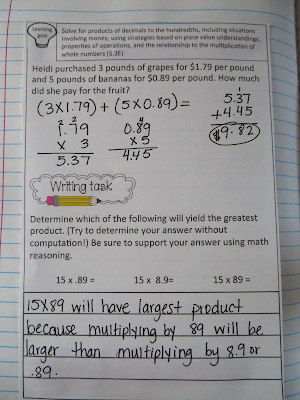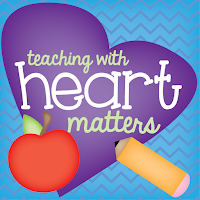I started looking at my teacher journal for the past 2 years and I have to honestly say how pleased I am with the work we do in our journals. The thinking, exploring, writing and collaborating we do through the use of journals is what I attribute to our STAAR success.
Are you looking to enhance or begin using math journals in your classroom? Here are a few suggestions I have.
First of all, composition books or spiral journals will work just fine for you. I've used both and both work well. I highly recommend setting up the journal on the 1st day of school so you and your kids are ready to learn immediately.
Here are a few tips for setting up the journal:
*Consider adding a rubber band to hold everything in place and to keep the journal from overflowing
*Add a pocket on the inside cover of the journal to keep some handy dandy tools and math related items
*use glue, rather than glue stick. Glue is simply more durable.
Once you set up the journal, give some thought to what you'd like to include in the journal. I find having some sort of structure, with flexibility of course, helps students stay organized and process content.
Here are a few components I always include in journals:
*Interactive graphic organizers (IGO). Kids love them. Teachers love them. They help chunk and organize information. I use different colors as we make them, that match a supporting anchor chart, so that it is easy for me to say "find your yellow IGO on dividing decimals." I use IGO for note taking and at times as a review. Here's a sample one for solving for products of decimals. Also, with IGO teacher your kids to see them as a resource they can go back to when they need a refresher or extra support during math.
*Teach kids there are many ways to arrive at an answer! Here are some notes we took on different ways to add mixed numbers. Some kids will master all, some kids will master one way. It's OKAY! I usually tell them find the one you're VERY strong at, learn it backwards and forwards, and then I challenge them to learn one more way. It helps them to feel empowered that they can use what they know to connect and understand what they may be struggling with.
*Have kids write about math! That's right- writing should occur in all content areas! I've always seen writing as a way to solidify the learning and as a formative assessment tool. When kids write using content vocabulary, they make strong mathematical connections and deepen their understanding.
*Provide them with activities: Concrete to Pictorial to Abstract. I always tell my kids we are going to build it, sketch it, and solve it.
One example of this is a place value stand. We use these daily to practice skills such as rounding, expanded form and expanded notation. It's fun and doesn't take up a lot of our time.
Here we used based ten blocks YES!!! in 5th grade :) to compare decimals.
*Make real-world connections! In this activity we connected the multiplication of decimals and whole numbers to shopping at a grocery store! So much fun!
and last, but not least...
*Use a variety of graphic organizers (thinking maps) to process math learning. Whenever possible, have your kids practice both filling in and interpreting information found in tables and other graphic organizers. It's part of math! Have them share their findings and observations using sentence stems. You'll see their vocabulary expand!!!
So go on! Incorporate math journals into your daily instruction!!!
If you are interested in the activities and ideas for math journals, you may want to see my new math journal resource. A complete TEKS aligned guide with activities and examples for 5th grade math.
Have a wonderful day!
P.S. Are you a 5th grade teacher? Check out my TpT store! It is full of 5th grade aligned resources for math, science, and reading!































